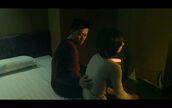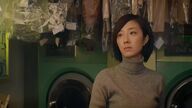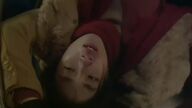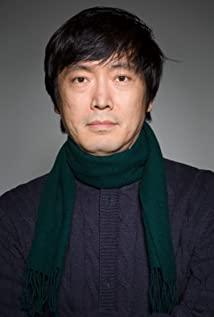As the best representative of domestic film noir, Diao Yinan's "Fireworks in the Daytime" not only inherits the traditional film noir, but also carries a rewrite of the localization of film noir in China. Due to the real national conditions and various limitations of the subject matter, Chinese-style noir films have always faced many practical difficulties. Diao Yinan's excellent writing and directing skills and exquisite subject matter grafting have allowed us to see a familiar and charming noir temperament. It incorporates a lot of black material about sex, violence, and social issues, and follows the traditional expressionist lighting and photography techniques in the image, while injecting a more complex and profound charming temperament into the hero and heroine.
The film won the Golden Bear Award in one fell swoop, which can probably be seen as China's successful grafting of the film noir genre. The charm of film noir is still undiminished, and new vitality is constantly injected. For example, Lou Ye's new film "Rain in the Wind" released this year The Cloud of Doing" can still be regarded as the category of film noir narrative, but the black attribute gives way to Lou Ye's strong personal style and author's appeal, and "Fireworks in the White Sun" perfectly integrates the two, making the black more attractive.
1. Familiar film noir narrative.
The early noir films were born out of the narrative framework of "tough guy" detective films. The male protagonist, as a private detective, came into contact with the case and fell into a sinful environment, triggering a fatal confrontation and death. "The Maltese Falcon", the originator of film noir, "Chinatown" and later "Seven Deadly Sins" of the new school noir, all use "detective narrative" as the main clue of the film, like the backbone of the vine, and its spread It is the main theme of film noir, which often contains sin, desire, despair and death. "Double Indemnity" is about self-destruction caused by desire, "Chinatown" is a sinful world full of despair and powerlessness, and "Fireworks" is the interweaving of desire, crime and morality.
Zhang Zili, played by Liao Fan, is a typical image of the protagonist of a film noir. The failed marriage, the unsatisfactory sexual desire, and the image of a downhearted sheriff carry a heavy sense of guilt over the death of his teammates. . The film divides the story into three paragraphs with distinct time, in which the many cases involved are connected in turn to form a serial murder case. The director constructs such a dark story through genre paradigms such as detective, femme fatale, and third person. In the bleak night, the three of you chase after me, staged the wrestling and entanglement between love and lust, love and hate. Just like the end of the film, there is no name for the final destination of the protagonist, because for a noir film, people are the most profound.
Second, the expressionist audio-visual style.
The style of film noir, largely derived from the expressionist forms of its photography, scenes, props, etc., from the earliest German expressionist photography styles (low-key lighting, unbalanced composition, special angles, strong light and dark contrast, etc.) into black From the start of the film, it forms a dominant, stylized visual map, not just of the claustrophobic and horrific interiors and ecstatic character performances of Sunset Boulevard, but of Blade Runner. From the damp, gloomy, dirty, and tattered landscapes of the landscape, to David Fincher's hands, it can be a city street full of fog and torrential rain. If the "black" of film noir dominates the dark consciousness of the entire film, then the Coen-Brothers used the white and flawless "world of ice and snow" in "Frozen" to create a sinful world full of violence and cruelty, and then "Frozen". No Country for Old Men simply uses the western landscape to carry a savage world of rational exile and legal disorder.
The scene selection of "Fireworks in the Day" is similar to the ice and snow world of "Blood and Ice". The rusty streets of the old industrial area in the northeast and the outdoor landscape buried by ice and snow constitute its environmental map. Snowy exteriors mixed with mutilated corpses and misty pale shades, cloudy, snowy, night, breathing, shrinking people, stiff expressions, footsteps in the snow, etc. Compared with the dark and wet rainy night in the classic film noir scene, the scene of "Fireworks in the Day" is more dramatic and has a unique aesthetic style. The open location environment is often accompanied by stop and danger. Streets, street lights, alleys, depth of field, shadows, these elements are often used in the murder scene of the movie, and the criminal investigation captain in the movie is the sacrifice of this "scene" By. Indoor scenes are completely different tones. Throughout the film's indoor scenes (including the interior of the car), it is more layered and expressive in terms of lighting, tone, photography, composition, and the performance of the characters. For example, if a scene is captured in a hairdressing salon, the red, yellow, white and purple lights with distinct layers are scattered in an orderly manner, which is a sign of a tragedy against the backdrop of neon aesthetics, while indoor scenes with fewer characters have more delicate lighting photography. to capture the emotions that are covered up (lust, ambiguity, estrangement). Film noir photography has always been free from one set of conventions, it is often varied and fascinating.
Third, the typical noir character attributes.
The frustrated male protagonist, the secluded femme fatale, and the disappearing (dead) "third person" constitute the common character settings in film noir. Talking about the plot and character structure of "Fireworks in the Day", it is easy to think of the classic noir film "The Third Man" directed by Carroll Reed in 1941. The director also unabashedly expressed his love for film noir in the interview. Enthusiastic, many of the settings in the movie pay tribute to classic noir films, such as the disappearing husband and the Ferris wheel drama, which can find corresponding passages in "The Third Man".
Male protagonists in film noir are often down-and-out tough-guy detectives, police officers, private detectives, etc. with dual personalities in character. The protagonists are driven by greed, sensuality, or their own morbid impulses. They create their own survival mode with no way out, and That led to their destruction or near destruction, as the hero in Billy Wilder's "Double Indemnity" and "Sunset Boulevard" did so fatally. In "Fireworks in the Day", director Diao Yinan inherited the image of a frustrated man in film noir, and Zhang Zili played by Liao Fan is such a loser image. His wife leaves, drinks alcohol, is confused, and wants to find out about the case. achieve their own masculine dignity and status. This kind of male image is in the same line as the male protagonist in traditional film noir, but uncharacteristically, Zhang Zili achieved his "American dream" of solving a case and reinstating his sexual satisfaction by going straight into the tiger's den. Compared with the pessimistic and desperate tone at the end of the film noir Sex, its ending is more modern and darker, full of banter, sarcasm and unpredictability.
Wu Zhizhen, played by Gui Lunmei in the film, corresponds to the "femme beauty" in film noir, but at the same time transcends the inherent character attributes, she undertakes a deeper character appeal. Compared with the coquettish and sexy heroine image (Barbara Stanwyck), who is flirting with men's lust everywhere, Gui Lunmei's sweet and fresh desktop has become the "iceberg beauty" (Greta Garbo) of the Northeast. Cold and ice and snow constitute her unique film noir femininity. The thin body, short hair covering her face, taciturn and indifference, sad eyes, and a body wrapped in a dark coat are not at all a female image that prompts people to emit hormones. Because of this, she is more attractive than those "sexy women" whose organs are exposed. Because of her mystery, she tries her best to cover up her true inner eroticism. Her hair-twisting movements and sad eyes convey a sense of beauty. A more ambiguous and irresistible femininity. This may be why the customers (owners) of the laundromat are always ready for her, Liang Zhijun is willing to kill her, and Zhang Zili is deeply in love and tries his best to break free. When Wu Zhizhen dedicated herself to Zhang Zili and used red (red sweater, red scarf, lipstick,) yellow (yellow coat) to dress up her image, she had already fully bloomed this inner lust and became a man The tool in the fantasy has become a male accessory, and she has determined the fate and tragedy of this character since she changed from the subject of desire to the object.
Conclusion:
Film noir has developed to this day and has experienced many innovations in form and content, but film people's expectations for film noir are still high. "Seven Deadly Sins" in the old police officer Samosa said: "Hemingway once wrote: 'This world is beautiful, it is worth fighting for', I agree with the second half".
View more about Black Coal, Thin Ice reviews











